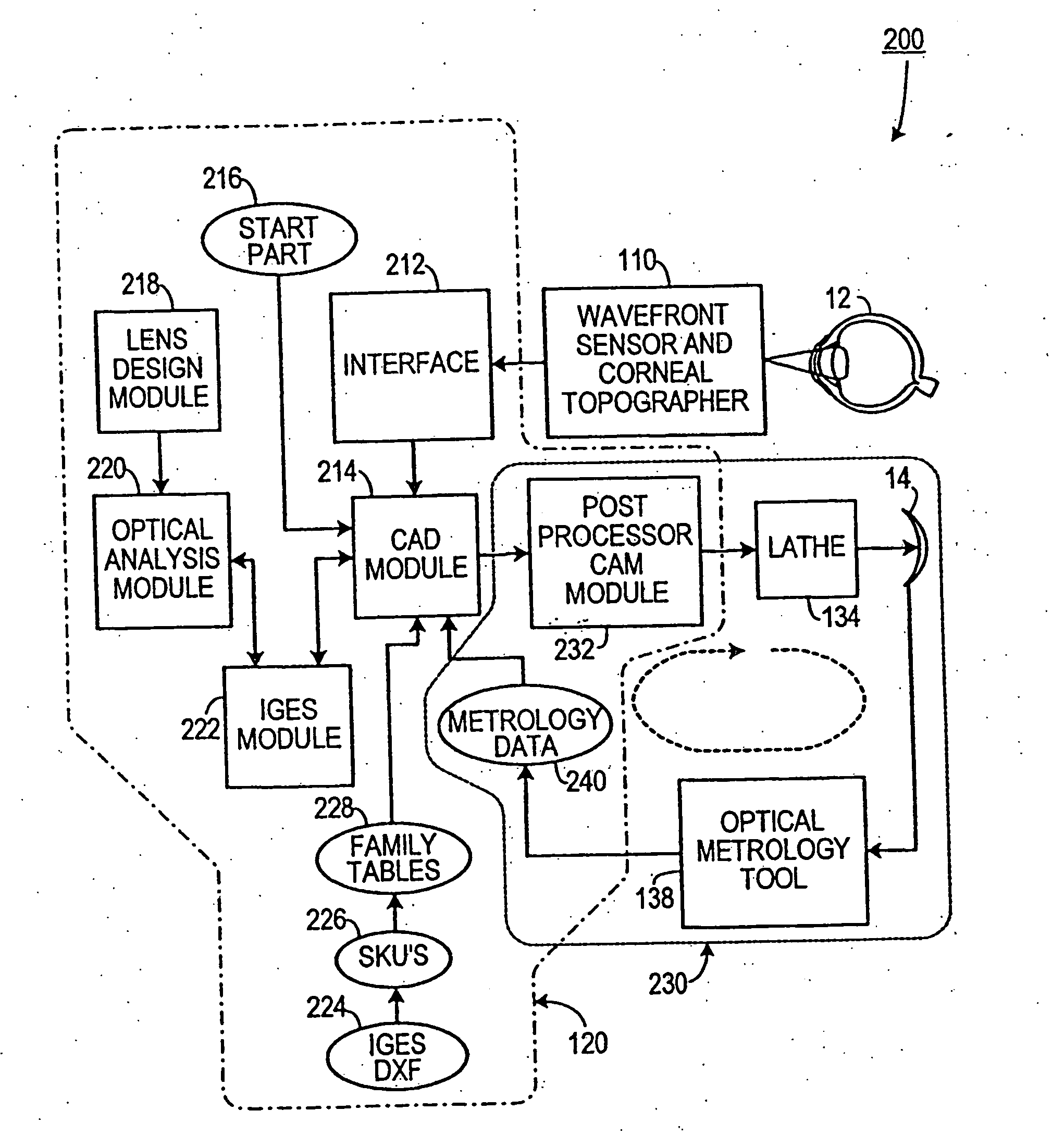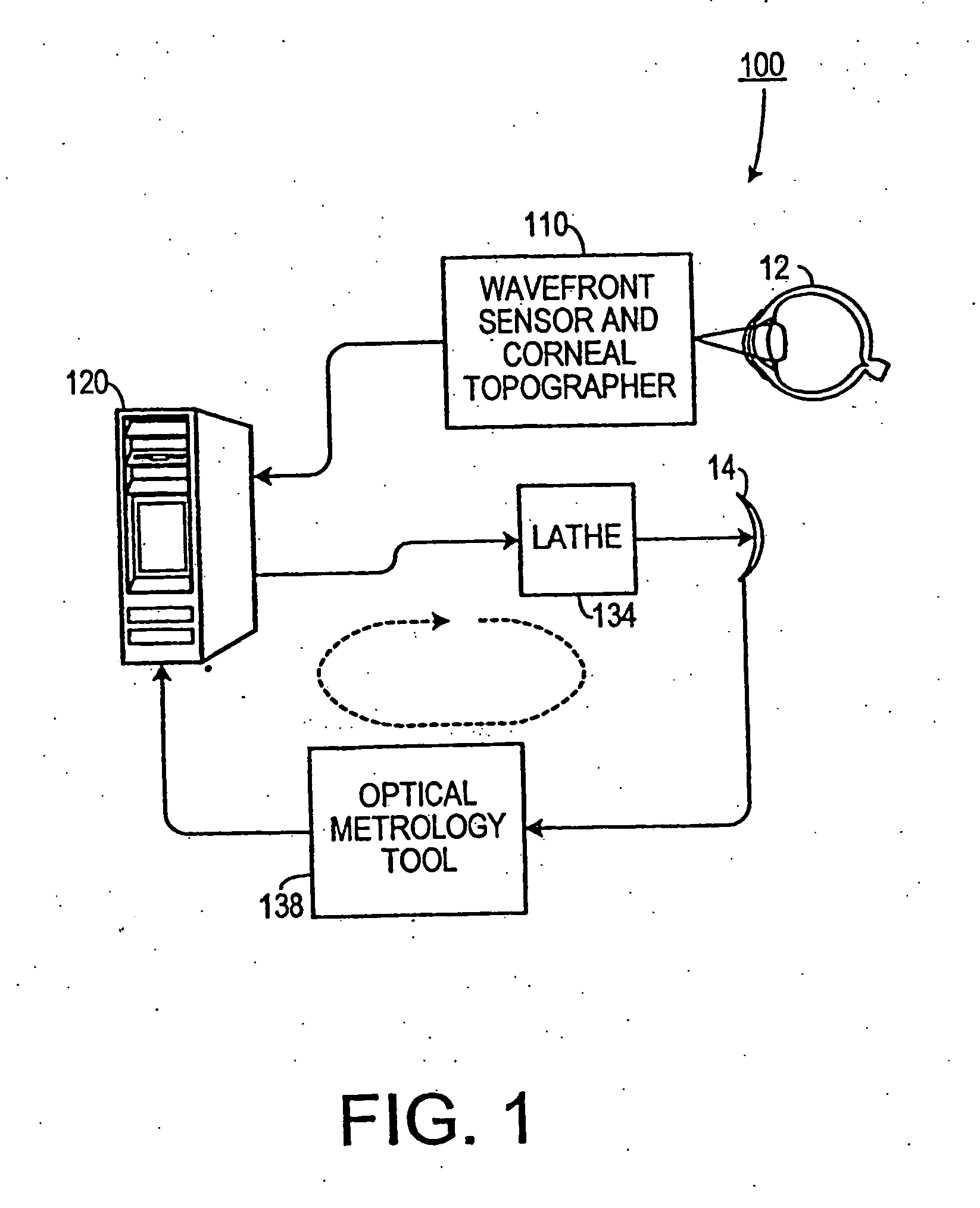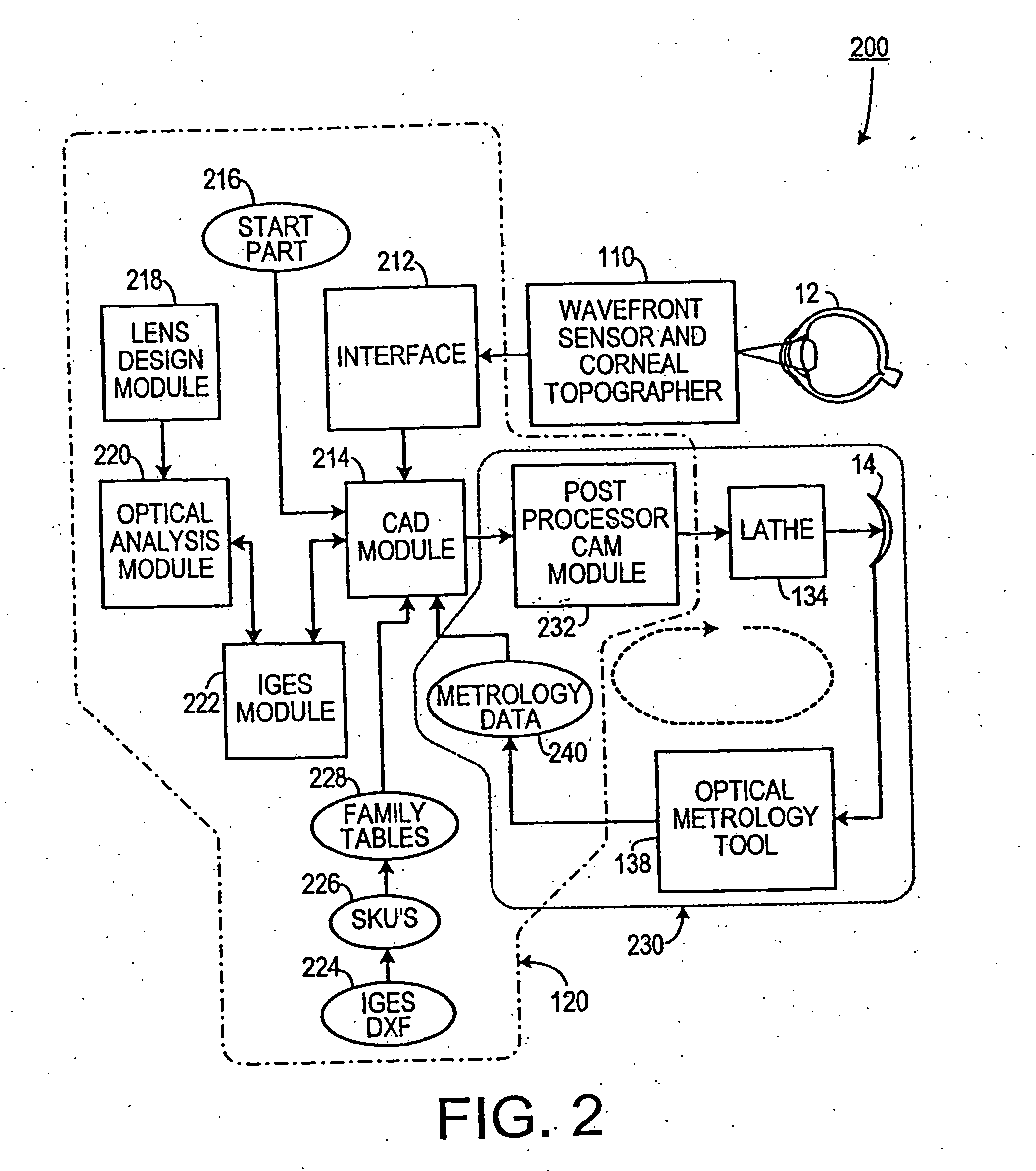Automatic lens design and manufacturing system
a manufacturing system and lens technology, applied in the field of automatic lens design and manufacturing system, can solve the problems of inability to correct high-order monochromatic aberrations of the human eye, inability to customize contact lenses or contact lenses, and inability to correct high-order monochromatic aberrations of the eye, so as to improve eye aberration correction, and correct high-order aberrations
- Summary
- Abstract
- Description
- Claims
- Application Information
AI Technical Summary
Benefits of technology
Problems solved by technology
Method used
Image
Examples
Embodiment Construction
[0030] A preferred embodiment of the invention is a method for creating a reduced computational model eye, the method comprising: (1) providing a set of characteristic data of an eye of an individual, wherein said set of characteristic data comprise wavefront aberrations and corneal topography data of the eye of an individual; (2) converting the corneal topography data into a mathematical description representing the anterior surface of a model lens; (3) designing and optimizing the posterior surface of the model lens so that the model lens reproduces the wavefront aberrations of the eye of the individual; (4) designing a model retina that has a curvature of the human retina and comprises a model fovea having a lattice of pixels representing photoreceptors, and (4) arranging the model lens and the model retina along an optical axis in a way such that the distance between the model fovea and the vertex of the anterior surface of the model lens is equal to visual axial length of the h...
PUM
 Login to View More
Login to View More Abstract
Description
Claims
Application Information
 Login to View More
Login to View More - R&D
- Intellectual Property
- Life Sciences
- Materials
- Tech Scout
- Unparalleled Data Quality
- Higher Quality Content
- 60% Fewer Hallucinations
Browse by: Latest US Patents, China's latest patents, Technical Efficacy Thesaurus, Application Domain, Technology Topic, Popular Technical Reports.
© 2025 PatSnap. All rights reserved.Legal|Privacy policy|Modern Slavery Act Transparency Statement|Sitemap|About US| Contact US: help@patsnap.com



